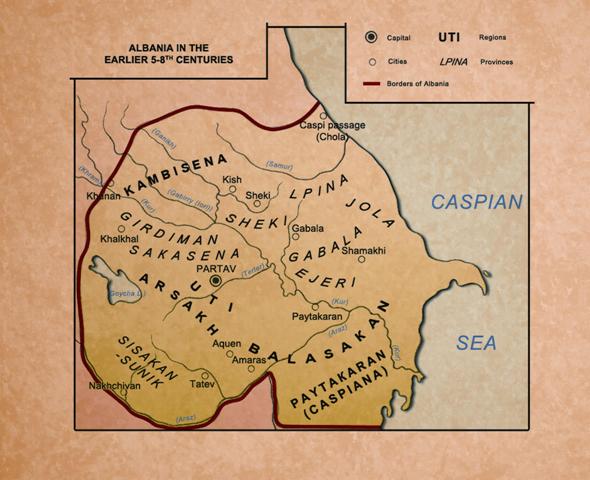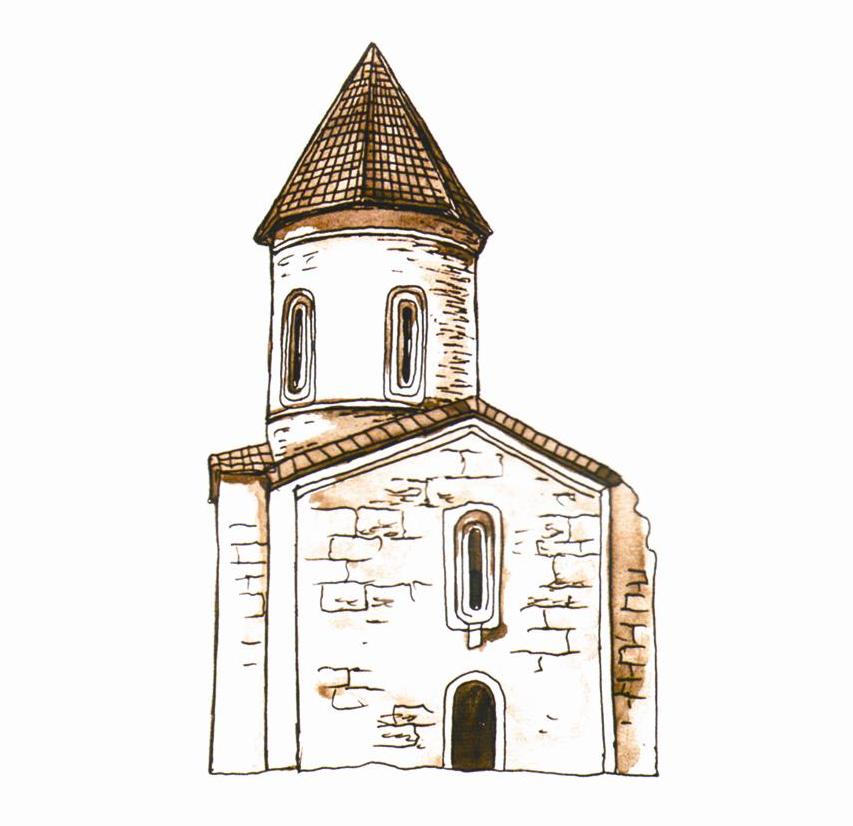 It is considered that Albania as a state existed in IV -III centuries BC. It bordered with the Caucasian Mountains in the north, the Caspian Sea in the east, Iberia in the west, Armenia in the south-west, Atropatene in the south. It means that the territory of the ancient Albania included the present-day Republic of Armenia, a large part of the present Republic of Armenia, southern part of the Republic of Daghestan (Russian Federation), the valley of the Alazani and Iori rivers in Georgia. According to the antique, Albanian and other sources, 26 tribes settled in Albania.
It is considered that Albania as a state existed in IV -III centuries BC. It bordered with the Caucasian Mountains in the north, the Caspian Sea in the east, Iberia in the west, Armenia in the south-west, Atropatene in the south. It means that the territory of the ancient Albania included the present-day Republic of Armenia, a large part of the present Republic of Armenia, southern part of the Republic of Daghestan (Russian Federation), the valley of the Alazani and Iori rivers in Georgia. According to the antique, Albanian and other sources, 26 tribes settled in Albania.
 The name Albania comes from the Albans, one of the biggest tribes in the Northern Azerbaijan. In the ancient times, Albania stood persistently against the alien invaders and could maintain its independence. According to a tradition referred to by the Albanian historian Movses Kaghankatvatsi, Albania was ruled by King Aran in I century BC. Then the territory of Albania stretched from the River Arax up to Khunakert castle (Kazakh-Borchali region). In 262, the state was incorporated into the Sassanid Empire. In 314, the Albanian ruler Urnair adopted Christianity as an official religion. As a result of the invasions of Arabs, Albania ceased to exist in 705. Its capitals were Kabala (Qabala) and Barda.
The name Albania comes from the Albans, one of the biggest tribes in the Northern Azerbaijan. In the ancient times, Albania stood persistently against the alien invaders and could maintain its independence. According to a tradition referred to by the Albanian historian Movses Kaghankatvatsi, Albania was ruled by King Aran in I century BC. Then the territory of Albania stretched from the River Arax up to Khunakert castle (Kazakh-Borchali region). In 262, the state was incorporated into the Sassanid Empire. In 314, the Albanian ruler Urnair adopted Christianity as an official religion. As a result of the invasions of Arabs, Albania ceased to exist in 705. Its capitals were Kabala (Qabala) and Barda.
«Azerbaijani states in history», Baku, 2012, p.65.













 Inauguration ceremony of President of Azerbaijan Ilham Aliyev was held
Inauguration ceremony of President of Azerbaijan Ilham Aliyev was held Ilham Aliyev wins presidential election with 92.05 percent of votes VIDEO
Ilham Aliyev wins presidential election with 92.05 percent of votes VIDEO President Ilham Aliyev, First Lady Mehriban Aliyeva and family members voted in Khankendi VIDEO
President Ilham Aliyev, First Lady Mehriban Aliyeva and family members voted in Khankendi VIDEO Plenary session of 6th Summit of Conference on Interaction and Confidence Building Measures in Asia gets underway in Astana. President Ilham Aliyev attends the plenary session VIDEO
Plenary session of 6th Summit of Conference on Interaction and Confidence Building Measures in Asia gets underway in Astana. President Ilham Aliyev attends the plenary session VIDEO President Ilham Aliyev was interviewed by Azerbaijani TV channels in Prague VIDEO
President Ilham Aliyev was interviewed by Azerbaijani TV channels in Prague VIDEO














